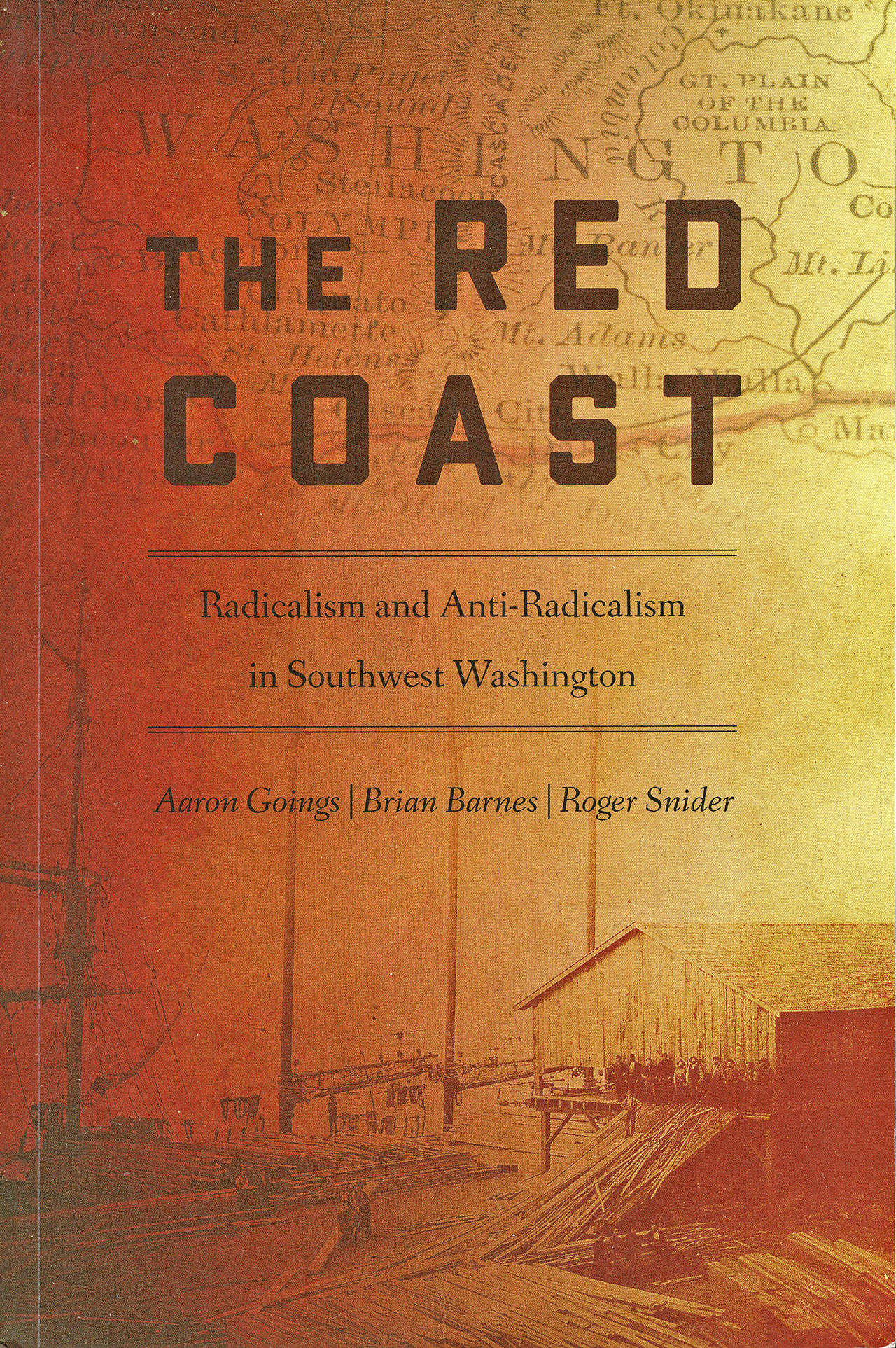By John Larson
For Grays Harbor News Group
“The Red Coast: Radicalism and Anti-Radicalism in Southwest Washington” is a must-read for Grays Harbor and Pacific County history lovers.
Co-written by Aberdeen native Aaron Goings and St. Martin’s University collaborators Brian Barnes and Roger Snider, this new book takes an overarching look at the fascinating history of labor, left-wing and progressive activists of Southwest Washington in the early 20th century.
The book is tied together geographically and topically by our area’s “red” past — a name applied to those activists, whose affiliations were frequently associated with socialism and communism. The book also examines the region’s employers — the “dominant class” — whose efforts to counter the left are an essential part of this broader story.
Throughout this 236-page softback, readers will find a small but meaningful selection of historic photographs, several from the Jones Photo Collection and the Polson and Pacific County museums.
For anyone desiring to take an even deeper dive into the source material, the book’s extensive end-noting and bibliography reveal the exhaustive research that went into the project. The authors scoured newspaper archives from across the region, university and museum collections, the State Archives and Library, and more.
The book’s 15 chapters include stories of the Columbia River “gillnet wars” of the 1880s and ’90s (pitting independent fishermen against corporate fish trap operations); Aberdeen’s expulsion of nearly all Chinese residents in the 1890s; a look inside the region’s Red Finn halls; Aberdeen’s 1911-12 free speech fight; the violent 1912 labor strike that crippled Grays Harbor’s lumber industry; and Raymond’s deportations of immigrant strikers.
Hoquiam’s Congressman Albert Johnson, onetime publisher of the Grays Harbor Washingtonian, rightly receives his own chapter. Johnson was a staunch opponent of the Industrial Workers of the World, and his newspaper’s reporting reflected this bias. Johnson was also the principal architect of the 1924 Johnson-Reed Act, often known as the Asian Exclusion Act, which shaped American immigration patterns for the bulk of the 20th century.
Centralia’s bloody 1919 Armistice Day tragedy and the sensational trial that followed in Montesano is also given a chapter here, recounting the events that lead to the death of four American Legion members and the second-degree murder convictions of seven IWW members. Beyond merely presenting the facts, this infamous incident is given fresh analysis as a major event in a much larger class war.
Slain Aberdeen mill worker William McKay’s story also is told, as are those of several women labor activists including Aberdeen’s Laura Law, who was murdered. One chapter is devoted to proletarian novels written by Grays Harbor authors, and another to Washington’s Criminal Syndicalism Law, which made it illegal to promote crime, violence or sabotage as a way of bringing about political or industrial reform.
“Red Coast” is engaging from cover to cover and will undoubtedly provide even the most studied buffs of Southwest Washington history with new insights into our area’s past.
A limited supply of “Red Coast” is available at the Polson Museum Store for $24.95 each.
John Larson is executive director of the Polson Museum in Hoquiam. Reach him at jbl@polsonmuseum.com or 360-533-5862. The museum is open Wednesdays through Saturdays from 11 a.m. to 4 p.m., and Sundays from noon to 4 p.m.


